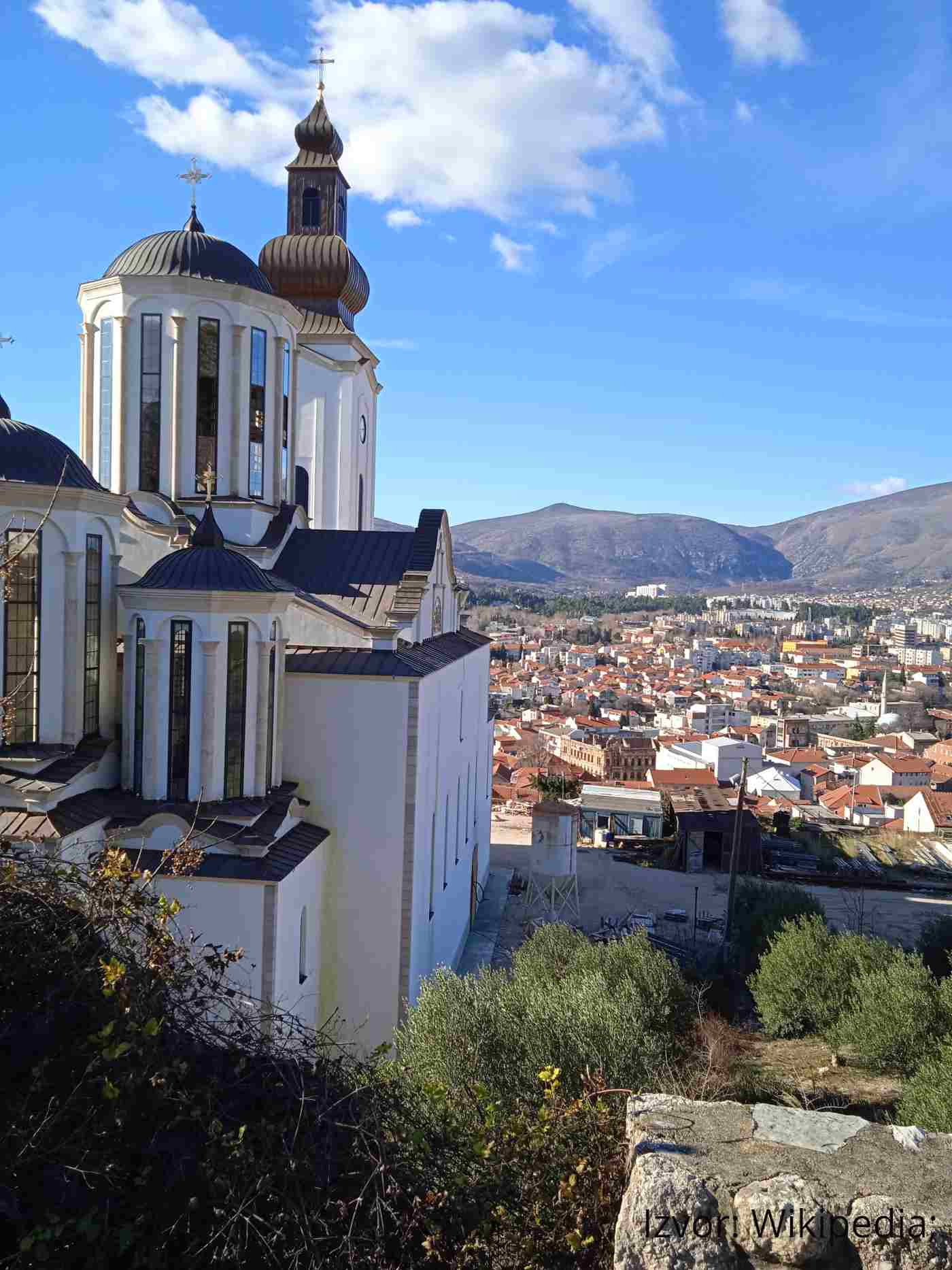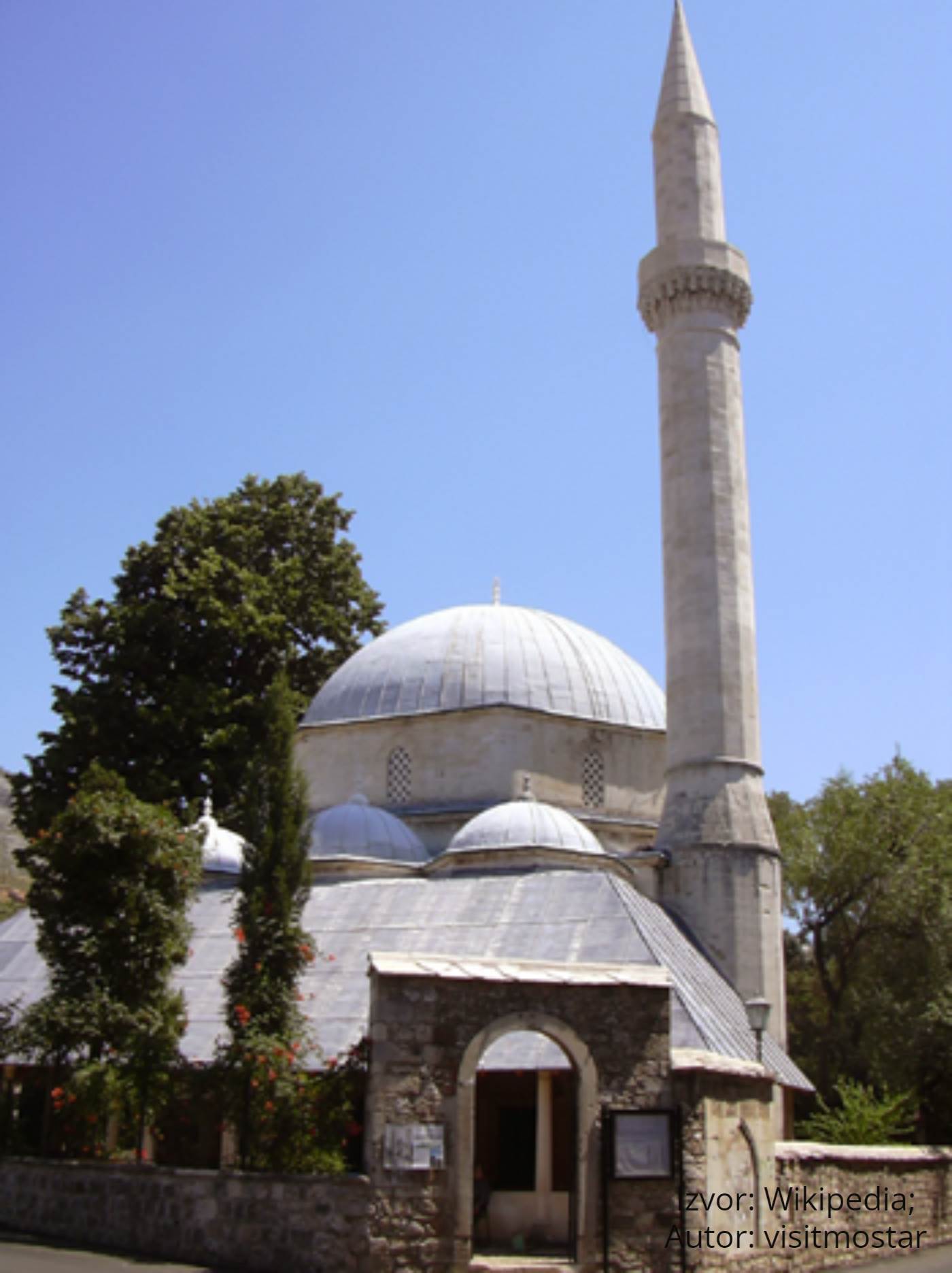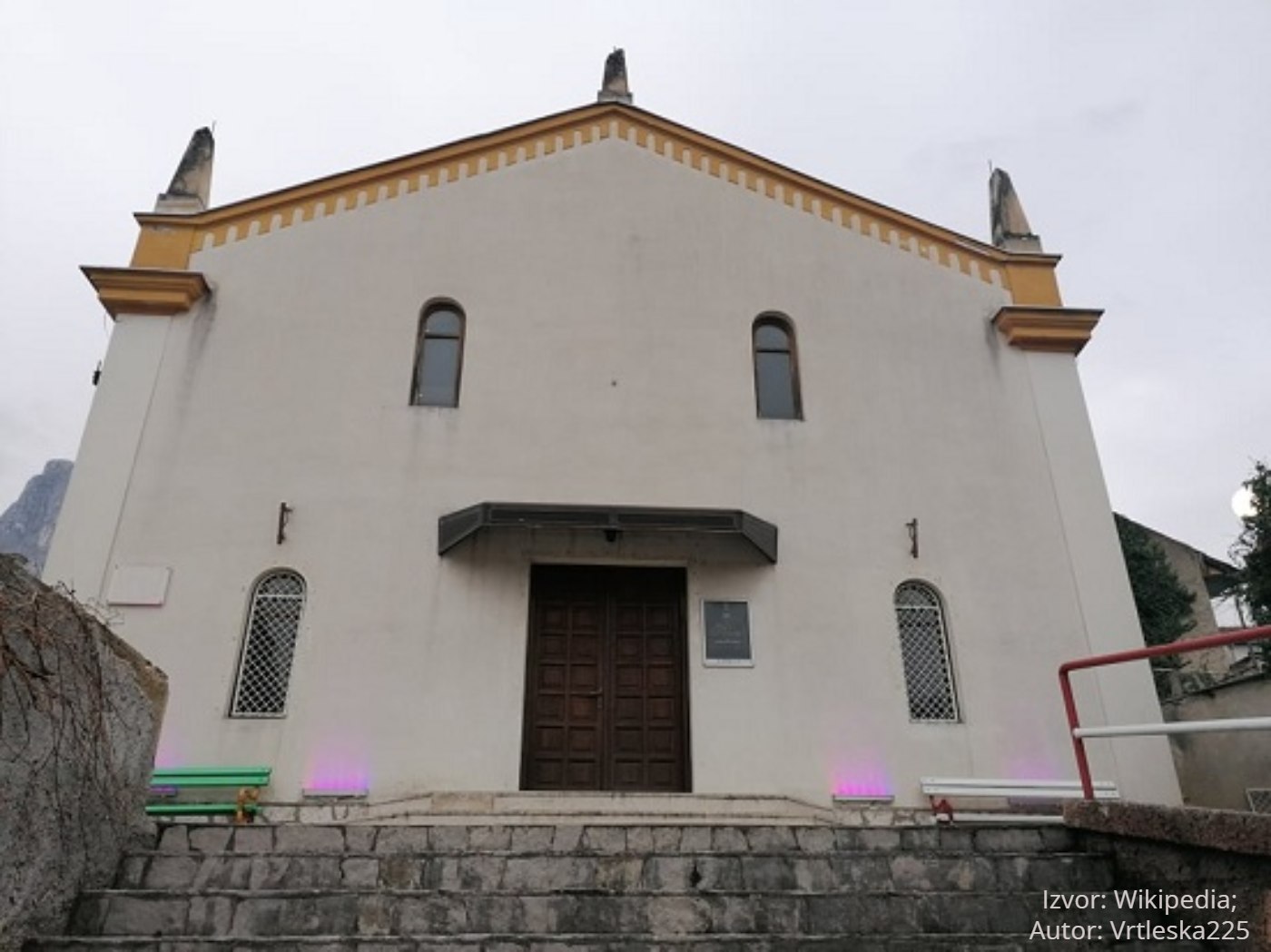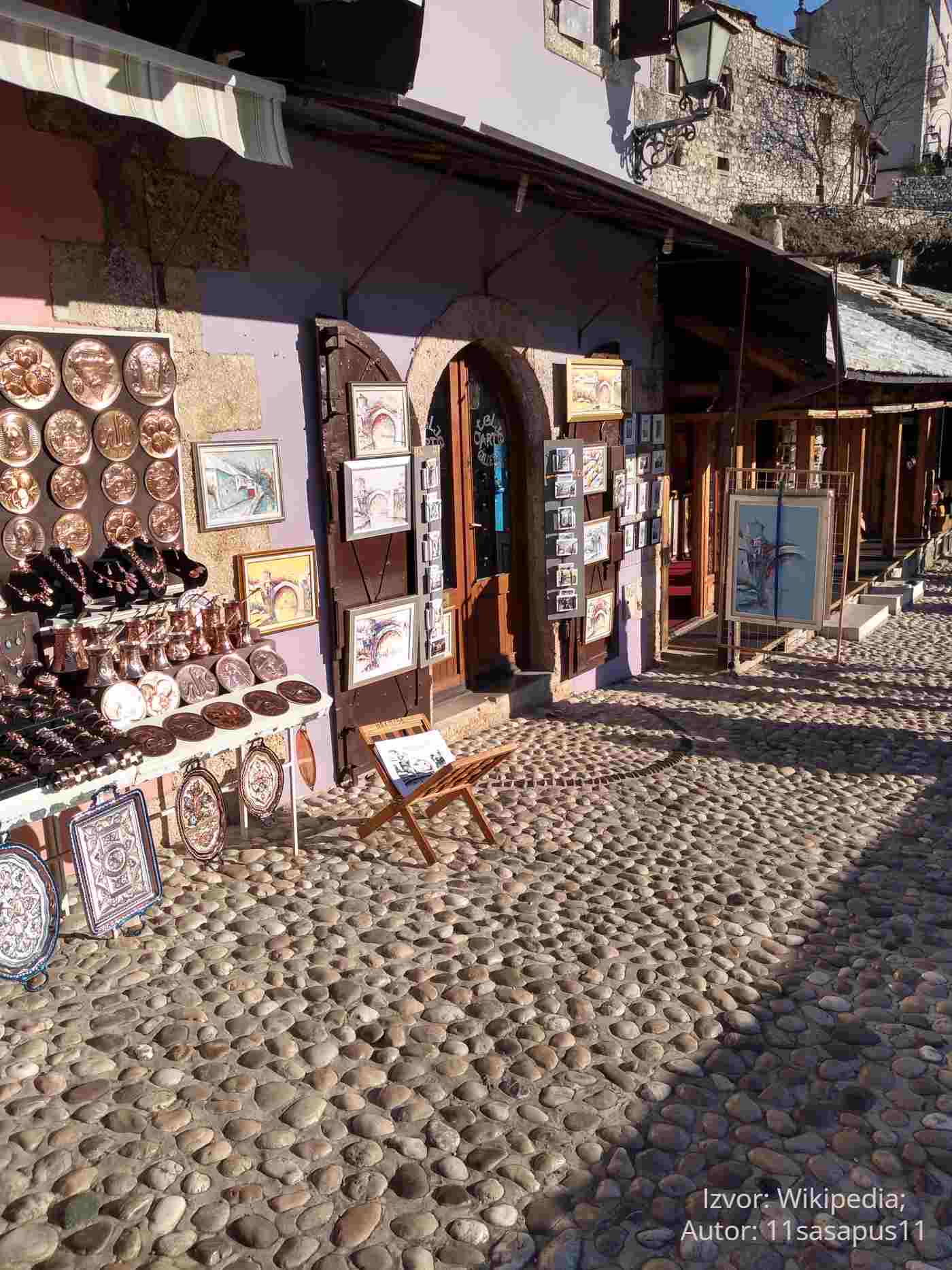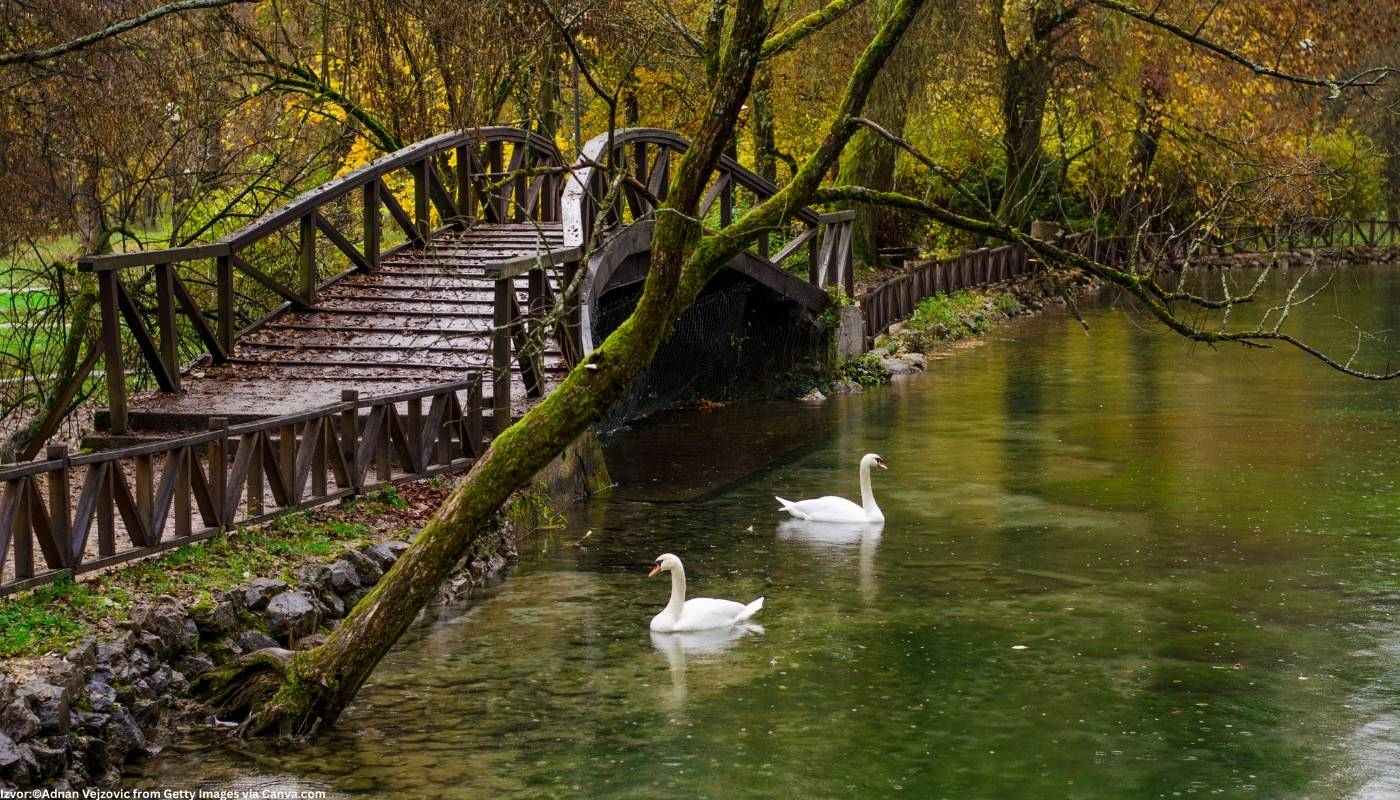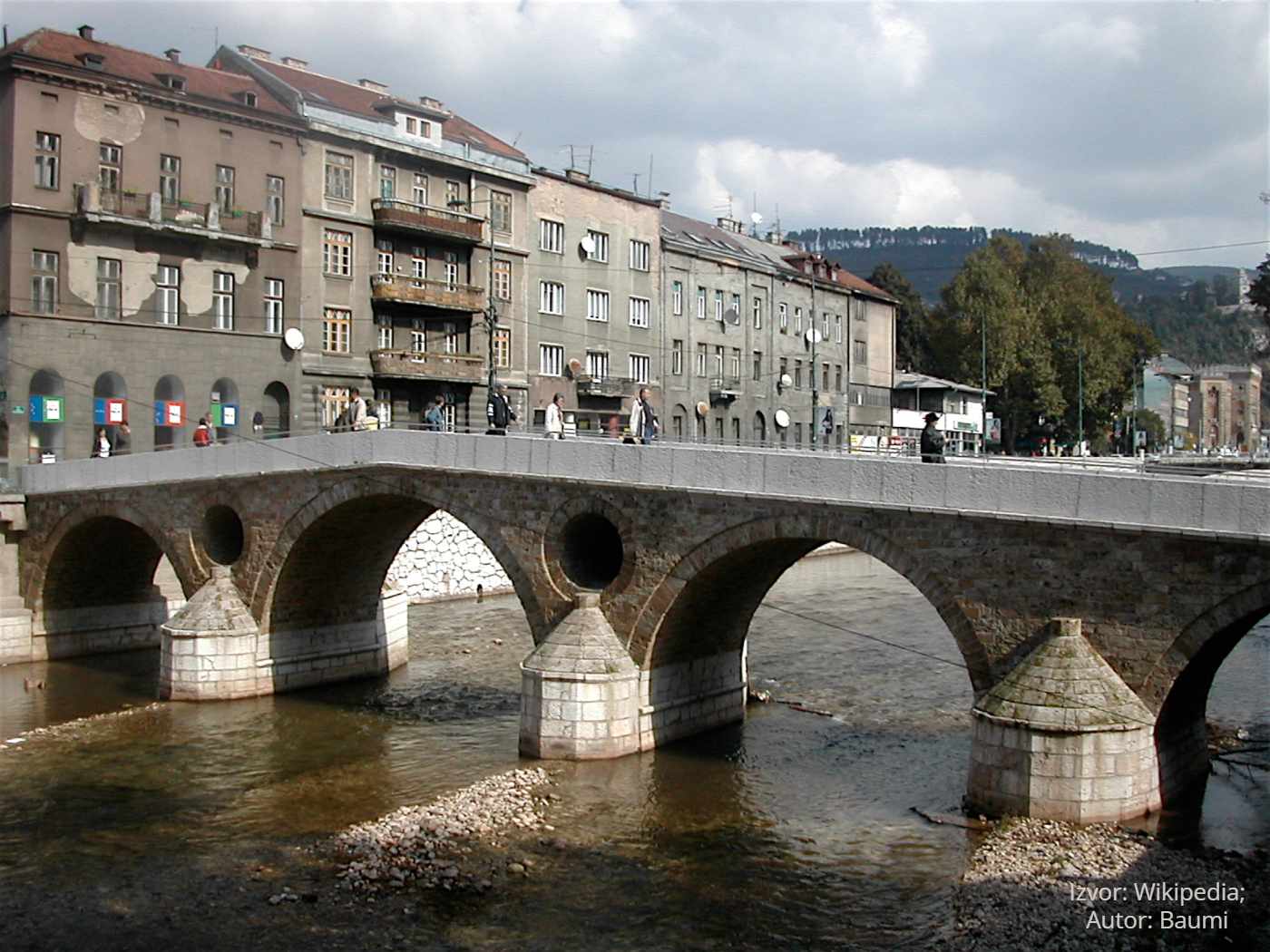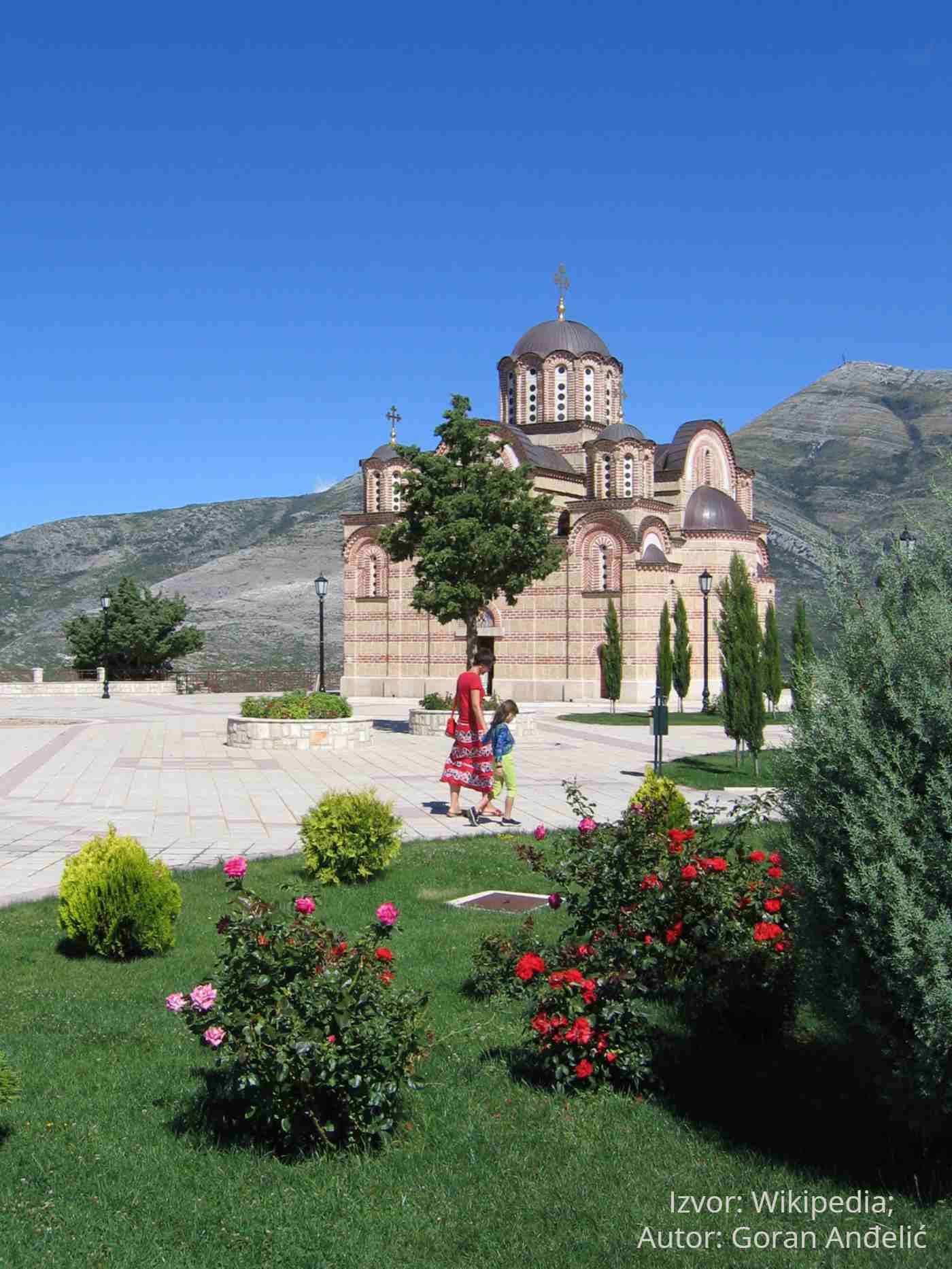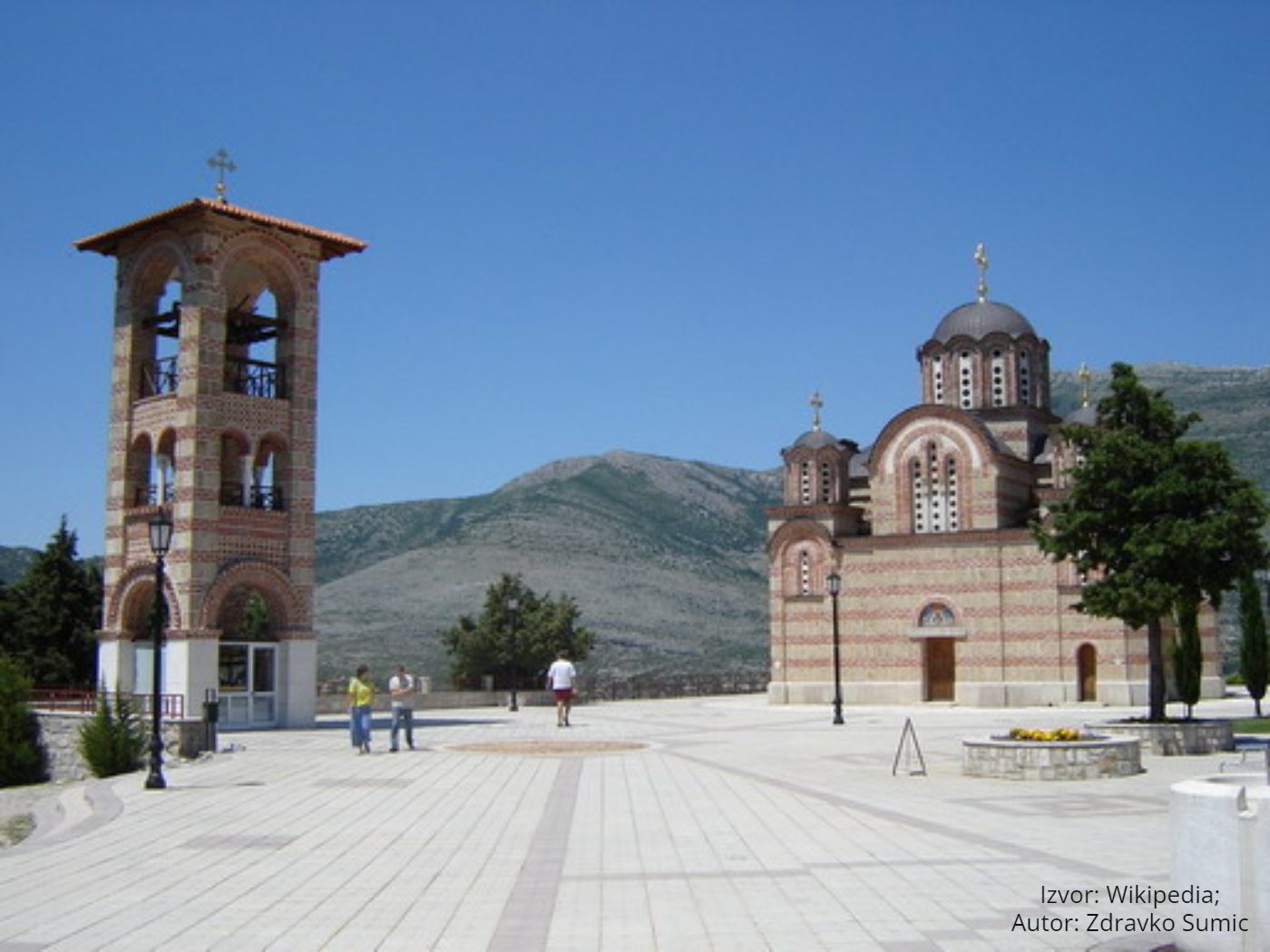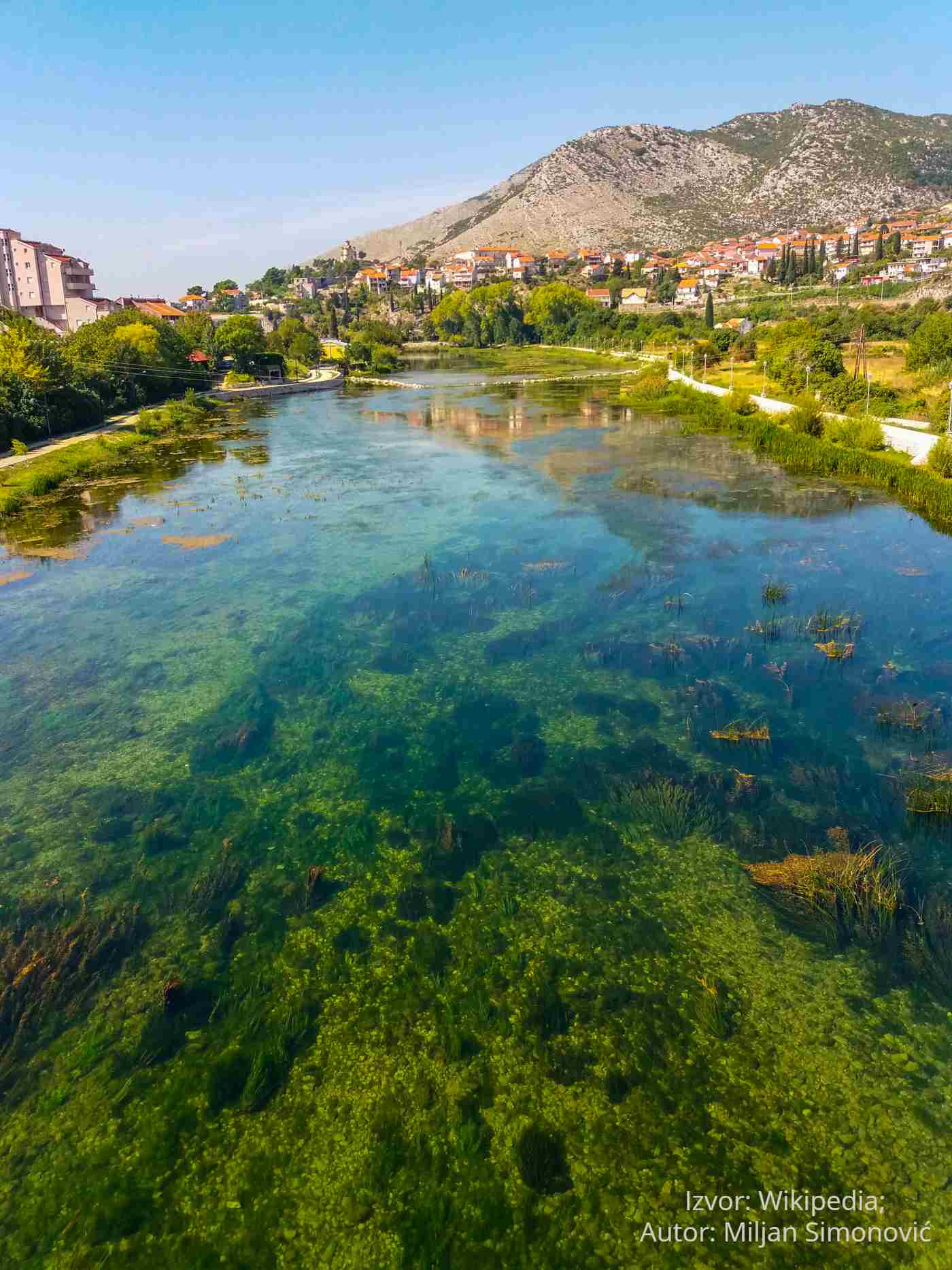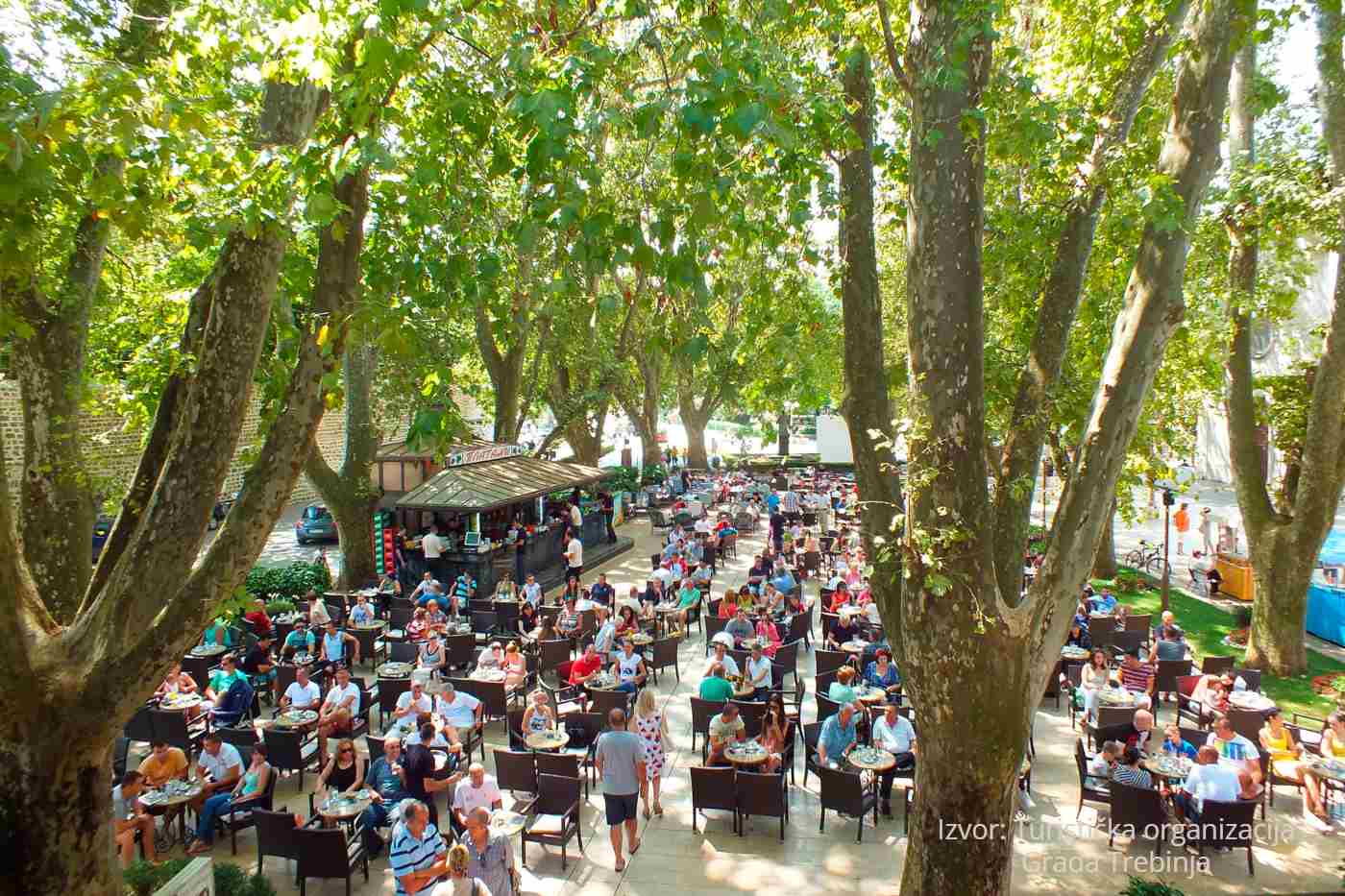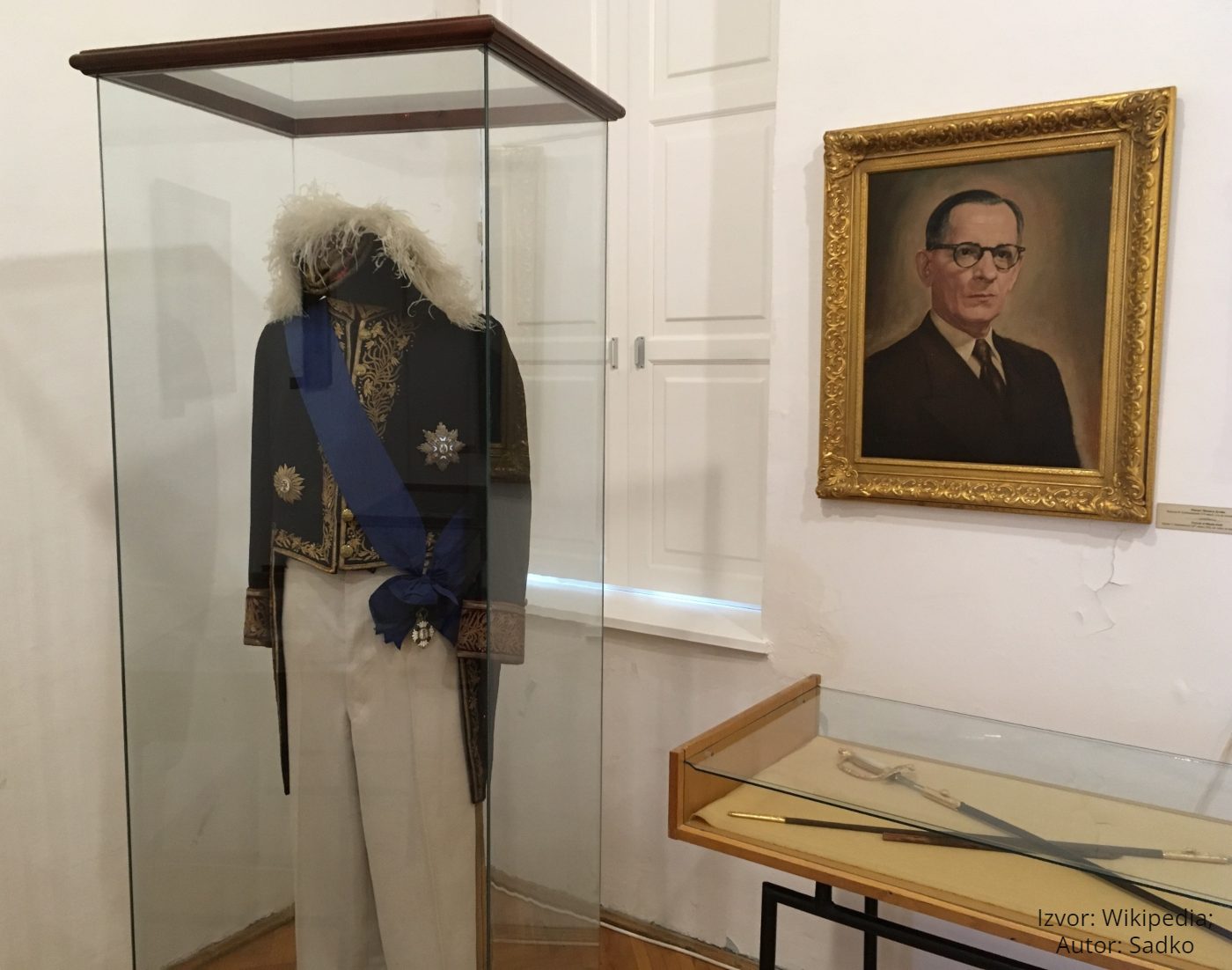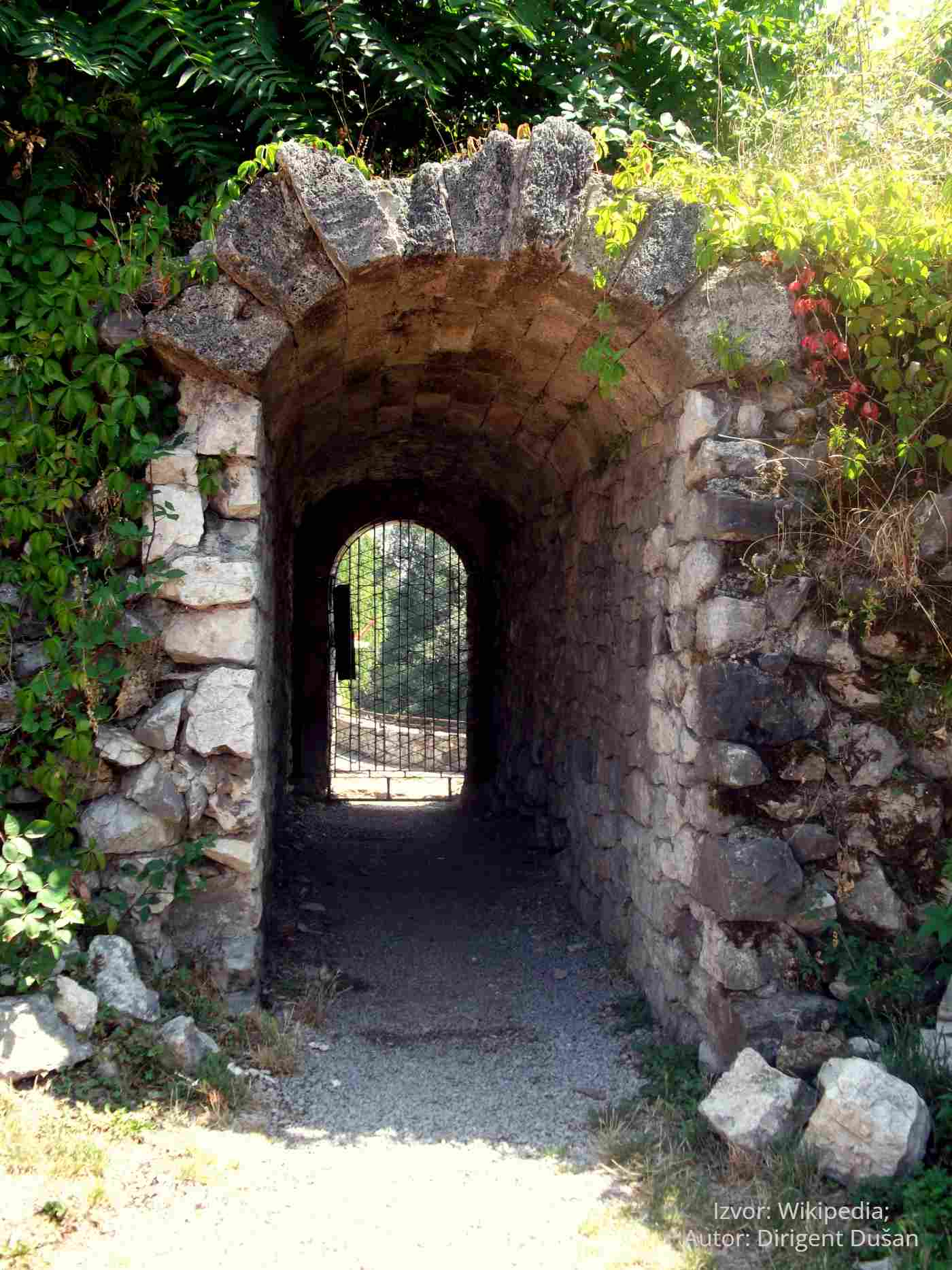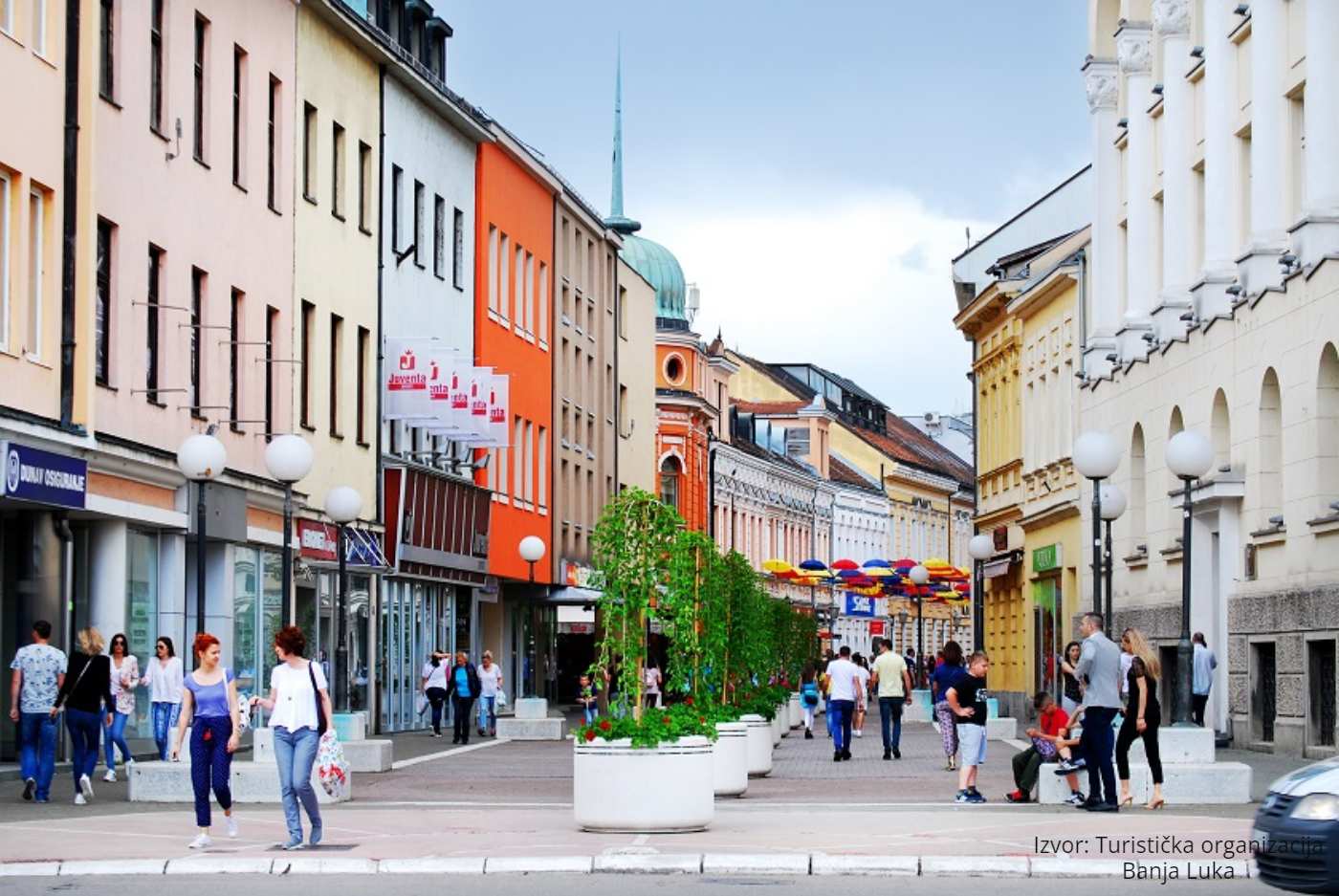Locations with the most attractions in Bosnia and Herzegovina
- The capital of Bosnia and Herzegovina, Sarajevo is a meeting point of East and West, with a rich history, the vibrant Baščaršija, and numerous events and festivals. The city symbolizes multiculturalism and historical crossroads.
- Historical and cultural attractions: Academy of Fine Arts, Baščaršija, Gazi Husrev-begov Bezistan, Latin (Princip's) Bridge, Museum of the Sarajevo Assassination, Sebilj Fountain, Sahat kula, Liberation Square, Eternal Flame Monument
- Religious sites: Emperor’s Mosque, Gazi Husrev-begova Mosque, Sacred Heart Cathedral (Katedrala srca Isusova)
- Natural attractions and sites: Bijambarska Cave, Barice picnic area, Čavljak picnic area, Mount Trebević, Mount Romanija, Spring of the Bosna River (Vrelo Bosne), Skakavac Waterfall, Ethno Begovo Village
- Festivals and events: Baščaršija Nights, Beer Festival, Sarajevo Music Festival, Jazz Fest, Sarajevo Winter Festival, MESS International Theatre Festival, Sarajevo Film Festival
- Mountains and Olympic centers: Bjelašnica, Igman, Jahorina, Trebević
- Villages and settlements: Lukomir Village
The second-largest city in Bosnia and Herzegovina, Banja Luka is known for its lush surroundings, cultural events, and historical monuments. The city offers a rich variety of festivals, museums, and natural sites.
- Historical and cultural attractions: Banski Dvor, Gospodska Street, Krupa on the Vrbas River, Ban’s Palace, Safikada Memorial Plaque, Šehitluci (Banj Brdo), Kastel Fortress, Bishop’s Palace (Vladičanski dvor), King Peter I Karađorđević Street
- Cultural institutions: Museum of the Republic of Srpska, Museum of Contemporary Art, “Ljubačke doline” Ethno Museum, National Theatre, Academy of Arts Gallery, Banski Dvor Cultural Center, Banja Luka Cultural Center, Center for Contemporary Art
- Festivals and events: Banja Luka Choir Meetings, Dečije carstvo, Kočićev zbor, Kestenburg, International Animated Film Festival, International Children’s Theatre Festival, Saint Sava Academy, Evening with the Tamburitza (Veče uz tamburu), Kozara Carnival (Kozarske poklade)
- Religious sites: Osovica Monastery, Ferhat Pasha Mosque (Ferhadija), Cathedral of Christ the Savior, Marija Zvijezda Monastery
- Natural sites and parks: Kozara National Park, Mlinska River, Bardača, Vrućica Beach
- Ethno and wine tourism: Ljubačke doline Ethno Village, Jungić Winery
- Spa town: Kneževo, Slatina, Direklija
One of the most visited cities in Bosnia and Herzegovina, Mostar is famous for the Old Bridge, symbolizing the connection of different cultures and religions. The city exudes oriental architecture, cobblestone streets, and a rich religious and cultural heritage.
- Historical and cultural attractions: Kajtaz House, Kriva Ćuprija, Sahat Kula, Old Bridge, Tabhana, Tower of Peace (Zvonik mira)
- Religious sites: Franciscan Church and Monastery of Saints Peter and Paul, Karađoz Bey Mosque, Koski Mehmed Pasha Mosque, Mostar Synagogue, Cathedral of the Holy Trinity
- Museums and galleries: Museum of Herzegovina, “Old Bridge” Museum
- Parks and natural sites: Fortica Park, “Skywalk” viewpoint
- Festivals and activities: Mostar Half Marathon, Diving from the Old Bridge
Located along the Drina River and surrounded by Sutjeska National Park and mountain viewpoints, Foča is rich in history, religious monuments, and adventure tourism such as rafting – making it a unique blend of nature and culture.
- Historical and cultural attractions: Beg’s House, Foča House, Sahat Kula, crypt and tower in Rataji, Šadići site, fortifications of Tođevac, Vratar, Kosman, Prilep, Veletin, medieval tombstones (stećci), Sutjeska Battle Memorial Complex
- Religious sites: Church of Saint Sava, Church of Saint Nicholas, Church of Saint Basil of Ostrog and Saint Peter of Dabrobosna in Velečevo, Church of Saint Nicholas in Riječica Čelebićka, Assumption of the Holy Virgin Mary Church in Čelebići, Church of the Assumption on Luč, Church of Saints Constantine and Helena on Okolišta, Transfiguration Church in Jabuka Modro Polje, Prophet Elijah Church in Miljevina, Holy Trinity Church in Ustikolina, Saint Panteleimon Church in Vrbnica, Saint George Church in Vranovina, Saints Cyril and Methodius Memorial Church in Jošanica, Aladža Mosque, Musluk Mosque, Emperor’s Mosque
- Museums and galleries: Museum of Old Herzegovina
- Natural attractions and sites: Sutjeska National Park, Sand Pyramids, Štirinsko Lake, Kotlaničko Lake, Donje Bare, Gornje Bare, Crno Lake, Bijelo Lake, Orlovačko Lake, Borilovačko Lake, Trnovačko Lake, Tara and Drina Rivers, Kuk Cave, Velika Kutlača Cave, Veliki Ponor Cave, Tunnel Cave, Peruć Cave, Ledenjača Cave
- Viewpoints and picnic areas: Dragoš Sedlo, Beškita, Prijevor, Borić, Gradačka Cliff, Dub, Zlatni Bor, Dulin Hill, Branovina and Katuni, Suha Picnic Area, Youth Picnic Area (Omladinsko izletište)
- Festivals and activities: Rafting on the Tara, Rafting on the Drina
Višegrad is most famous for the Mehmed Paša Sokolović Bridge, which inspired Nobel Prize winner Ivo Andrić to write one of his most significant works The Bridge on the Drina. The town is rich in history, religious buildings, and cultural content.
- Historical and cultural attractions: Andrićgrad (Kamengrad), Andrić Institute, Višegrad City Gallery, First Serbian Uprising Museum, Stari Brod Memorial Complex, Old Town Dobrun, Monument to Serbian Soldiers, Mehmed Paša Sokolović Monument
- Religious sites: Emperor’s Mosque, Gazanfer Bey Mosque, Dobrun Monastery, Saint Sava Monastery on Gornja Lijeska, Saint Nicholas Monastery in Dobrunska Rijeka, Ascension Monastery in Vardište
- Natural attractions and sites: Drina River Canyon, Turkish baths in Vilina Vlas Spa
Types of attractions in Bosnia and Herzegovina
Historical and archaeological attractions
These include fortresses, strongholds, old towns, monuments, important sites, archaeological findings, bridges, and other landmarks - remnants of old epochs and reminders of times past. Here are some notable ones you can visit in larger towns across Bosnia and Herzegovina.
To visit:
- Fortresses: Miljacki Grad (Eastern Old Town – Jahorina), Hodiđed (Jahorina), Gradina (Jahorina), Old Town (Visoko), Old Town (Trebinje), Đurđev Town (Zvornik), Gradina (Doboj), Bočac (Mrkonjić Grad), Kušlat Old Town (Zvornik)
- Monuments and significant sites: Monument to Filip Višnjić (Bijeljina), Monument to King Peter I Karađorđević (Bijeljina), Memorial Complex to the Forty Fallen Fighters in WWII (Zvornik), Monument to the Fallen in the Last Homeland War (Zvornik), Royal Village Kotromanićevo (Doboj), ZAVNOBiH Memorial Center (Mrkonjić Grad), Necropolis of the Noble House Nikolić (Neum), Ethno Village Stanišići (Bijeljina), Village of Medna (Mrkonjić Grad)
- Archaeological sites: Neolithic Site Okolište (Visoko), Bosnian Pyramid of the Sun (Visoko), Goduša Village (Visoko), National Monument Mile (Visoko), Medieval Tombstones – Stećci (Zvornik), Roman Quarry in Dardagani (Zvornik)
- Bridges: Arslanagić Bridge (Trebinje), Stone Bridge (Trebinje), Ivo Andrić Bridge (Trebinje), King Alexander I Karađorđević Bridge (Zvornik)
- Other: Ćiro Locomotive (Doboj), Kasina Building (Zvornik), Town of Stolac (Neum), Stara čaršija (Zvornik)
- To visit: Omer Pobrić Sevdah Institute (Visoko), Old Gymnasium (Bijeljina), City Hall (Bijeljina), Cultural Center (Bijeljina), Gallery "Zašto nije otišao Boro?!" (Mrkonjić Grad), Regional Museum (Visoko), Museum of Semberija (Bijeljina), Museum of Herzegovina (Trebinje), Regional Museum (Doboj), Cultural Center Doboj (Doboj), National Library (Doboj)
The natural beauty of Bosnia and Herzegovina is truly inspiring, with some of the most diverse and fascinating natural attractions in the Balkans. The country’s varied relief, climatic differences, numerous mountains, rivers, lakes, caves, and protected areas make it a paradise for nature lovers.
To visit:
- Parks and picnic areas: Ravne Park (Visoko), Starry Night Park (Visoko), Trebević Picnic Site (Jahorina), "Goli Koran" Nature Park (Jahorina), City Park (Bijeljina), Park of National Heroes (Doboj), Zelenkovac Picnic Area near Podrašnica (Mrkonjić Grad)
- Caves and underground sites: Novak's Cave (Jahorina), Orlovača Cave (Jahorina), Ravne Underground Labyrinth (Visoko), Djevojačka Cave (Doboj), Vjetrenica Cave (Neum)
- Rivers and canyons: Drina River, Sana River, Pliva River, Trebišnjica River, Vrbas River Canyon
- Lakes: Zvornik Lake (Zvornik), Goransko Lake (Doboj), Rudanka Lake (Doboj), Balkana Lake (Mrkonjić Grad), Bočac Lake (Mrkonjić Grad)
- Mountains: Mlađevac, Durmitor, Lisina
- Beaches: Feral Beach (Neum), Jazina Beach (Neum), Mimoza Beach (Neum), Neum Beach (Neum), Zenit Beach (Neum), Klek Peninsula (Neum)
- Protected natural areas: Hutovo Blato (Neum)
Religious sites in Bosnia and Herzegovina form a rich and diverse part of the country’s cultural heritage, reflecting its layered religious and historical background. Within a relatively small area, places of worship from four major religions—Islam, Orthodoxy, Catholicism, and Judaism—coexist and have done so for centuries.
To visit:
- Monasteries: Monastery of St. Basil of Ostrog (Bijeljina), Monastery of St. Petka (Bijeljina), Tavna Monastery with the Church of the Holy Trinity (Bijeljina), Tvrdoš Monastery (Trebinje), St. Petka Monastery (Tršić Monastery) (Zvornik), Monastery of St. Matrona of Moscow (Doboj)
- Churches and temples: Church of the Immaculate Heart of Mary (Bijeljina), Church of St. George (Bijeljina), Church of the Holy Trinity (Bijeljina), Peter and Paul Temple (Bijeljina), Svetog preobraženja Gospodnjeg Temple (Trebinje), Hram rođenja Svetog Jovana Preteče (Zvornik), Crkva rođenja Presvete Bogorodice (Mrkonjić Grad), Crkvište (Mrkonjić Grad), Herzegovinian Gračanica (Trebinje)
- Mosques: Atik Mosque (Imperial Mosque) (Bijeljina), Šerefudin’s White Mosque (Visoko), Tabhana Mosque (Visoko), Osman Pasha Mosque (Trebinje), Sultan Ahmed Mosque (Trebinje), Bey’s Mosque (Zvornik), Hamidija Mosque (Mrkonjić Grad), Kizlar Aga’s Mosque (Mrkonjić Grad)
- Other: Franciscan Monastery of St. Bonaventure (Visoko), nerukotvoreni lik Hrista na drvetu (Bijeljina), Međugorje (Neum)
Bosnia and Herzegovina hosts a wide range of events covering cultural, musical, film, sports, religious, and culinary themes. These events attract both local and international audiences, blending tradition with contemporary expression.
To visit:
- Jahorina: Duško Trifunović Days, EXIT Festival 84, International Festival of Documentary and Feature Film “Prvi kadar”, BiH Biathlon Open Championship, Alpine Skiing Open Championship, Đurđevdan Morning Celebration
- Neum: EthnoFest, Animated Film Festival – NAFF, Neum Summer
- Zvornik: Filder Cup, Gourmet Festival (Gurmanijada), “Ljudi i mostovi”, Skobalj Fish Festival (Skobaljijada)
- Doboj: Tea Days on Ozren, Honey and Rakija Days, Đurđevdan Race, FESTTOUR, Gastro Fest, Theater Fest
- Mrkonjić Grad: Balkana Haymaking Days (Dani kosidbe na Balkani), Honey Festival, Homemade Rakija Festival, Apple Ethno Festival, International Jazz Festival, Golden Fingers Cooking Contest (Zlatni prsti), Archangel Michael Fair (Aranđelovdanski vašar)
In addition to historical, cultural, natural, and religious landmarks, Bosnia and Herzegovina also offers modern, fun, and recreational attractions for families, youth, and adventure seekers. These include theme parks, adrenaline zones, educational centers, and unique local experiences.
- To visit: Western Mural (Bijeljina), Sun City – Dino and Aqua Park (Trebinje), Adrenaline Park (Doboj), “Paraghost” Sports Base (Doboj), “Balkana” Tourist and Recreational Center (Mrkonjić Grad), “Pecka” Visitor Center (Mrkonjić Grad)
The most famous fortresses in Bosnia and Herzegovina
Today, most of the fortresses are partially preserved and have become part of Bosnia and Herzegovina's tourist offerings, where visitors can explore the cultural legacy of the country, investigate the remains of ancient strongholds, and listen to the stories and legends tied to them.
- Miljacki grad: A medieval town in Istočni Stari Grad on Mount Jahorina, dating back to the 14th century, located on a ridge between the Paljanska and Mokranjska Miljacka rivers. It stands in a hard-to-reach area, and only remnants of the former tower and walls are preserved today.
- Bijela tabija: A tower near Sarajevo, built in the 15th century on the site of a former medieval fortress. It is part of the historic complex of the Old Town of Vratnik and has been declared a national monument.
- Gradina: A medieval fortress in Gornje Pale on Jahorina Mountain. Only ruins remain, and it is believed to have belonged to the noble Pavlović family before the 14th century. There are indications that the site may have been inhabited by the Romans.
- Old town of Visoki: Another medieval town-fortress on Visočica Hill, dating back to the 14th century, mentioned in records of King Tvrtko Kotromanić. It served both defensive purposes and as a place where royal charters and documents were written. Today, it is recognized as a national monument.
- Đurđev grad: Also known as Zvornik Fortress, this fortress is a national monument of Bosnia and Herzegovina. It is believed to have been built around the 13th or 14th century and was named after Đurađ Branković, who conquered it in the 15th century. The fortress was later expanded by the Ottomans and Austro-Hungarians and today consists of the Lower, Middle, and Upper towns.
- Gradina (Doboj Fortress): A medieval town built on a hill above the Bosna River valley. The exact date of construction is unknown, but it is believed to be from the 13th or 14th century. During World War II, the fortress served as a military stronghold.
- Bočac: The remains of a former fortress near Mrkonjić Grad consist of walls and towers. In earlier times, it had a strategic defensive role. The site was abandoned in the 19th century and has not been significantly maintained since, although it is considered a national monument of Bosnia and Herzegovina.
- Tođevac: A fortress in Foča on the Hrčavka River, near Sutjeska National Park, located on steep cliffs. It once served to protect the area of Tjentište and is now a historical and tourist site accessible from the nearby village of the same name.
- Kastel fortress: Kastel is a historic area and part of Banja Luka, located along the Vrbas River. Ancient artifacts have been found at the site, suggesting the existence of a structure dating back to antiquity. However, there are no records of the fortress during the medieval period, so it is assumed that it was destroyed and rebuilt in the 18th century, which is how it appears today.
- Old town of Kušlat: A medieval town near Zvornik (about 15 km south), located at the confluence of the Jadar and Drinjača rivers on a steep cliff. Built in the 13th century and abandoned in the 19th century, it is mentioned in the writings of traveler Evliya Çelebi and in the literary works of Ivo Andrić.
- Old town of Dobrun: Also known as the "Town of Cursed Jerina," although there is no evidence of her involvement in its construction. Located above the Rzav River in the village of Dobrun near Višegrad, the fortress was of great importance in the 15th century and hosted Dubrovnik merchants. It is believed to have fallen due to the betrayal of a servant named Jovan Kalauz.
The most famous national parks in Bosnia and Herzegovina
- Sutjeska National Park: This is the oldest national park in the country, established in 1965. It is most easily accessed from Foča, located just over 100 km from Sarajevo and about 150 km from Dubrovnik. A unique feature of the park is the presence of the last remaining primeval forest in Europe — the Perućica rainforest. The park also contains the highest peak in Republika Srpska, Maglić (2,386 m above sea level). Sutjeska is incredibly rich in flora and fauna: it is home to over 100 species of birds (notably woodpeckers), foxes, chamois, wolves, deer, wild boars, wildcats, golden eagles, capercaillies, rock partridges, conifer and beech forests, fungi, and many endemic species (such as the black pine). Visitors can explore the Skakavac waterfall — one of the highest in the country — the rivers Piva and Drina, numerous streams, and nine glacial lakes. The park also hosts the OK Fest, which promotes eco-tourism and youth tourism.
- Kozara National Park: Kozara was declared a national park two years after Sutjeska. The park includes numerous viewpoints, rivers (Mlječanica, Moštanica, Starenica), streams, and mountain peaks. It is situated between the rivers Una, Sava, Vrbas, and Sana and is known for its rich biodiversity. In addition to natural beauty, the park offers opportunities for active tourism, including hiking, cycling, skiing, walking, and visits to memorial sites. At the heart of the park is Mrakovica — a memorial dedicated to the victims of World War II, along with a museum complex. The park is most easily accessed from Prijedor (24 km) and Banja Luka (56 km).
- Una National Park: Una was designated a national park in 2008 and is the only national park located in the Federation of Bosnia and Herzegovina. The park includes the canyons of the Una and Unac rivers. It is most easily accessed from the nearby town of Bihać, located just 13 km from the park entrance. The park’s most beloved attractions are the Štrbački Buk waterfalls (the largest on the Una River) and the Martin Brod area, renowned for its waterfalls and natural beauty. Another popular spot is Kulen Vakuf, ideal for hiking thanks to numerous forest trails and the surrounding clean waters. Lohovo attracts cyclists and hikers, while the Japod Islands (Japodski otoci) are perfect for camping. Within the park, visitors can also explore preserved ancient fortresses, medieval castles, sacred sites, and archaeological landmarks.
- Drina National Park: Drina is the youngest of the national parks, officially designated in 2017. It is located near Srebrenica (about 10 km away) and close to Tara National Park in Serbia, stretching along the left bank of the Drina River — from the Perućac Lake dam to the municipalities of Rogatica and Višegrad. A standout feature of the park is the Pančić spruce (Picea omorika), which grows exclusively in this area, as well as other endemic species like the Derventa cornflower. Notable wildlife species include chamois, brown bears, and golden eagles. The park also contains remains of medieval fortresses such as Đurđevac and Klotjevac.
The most famous religious objects in Bosnia and Herzegovina
- Ferhadija mosque: The mosque dates back to the 16th century and is located in the center of Banja Luka. It was built in the classical Ottoman style. Within the complex is also a clock tower (Sahat-kula) near the mosque. Throughout its history, it has been destroyed and damaged many times, and it was most recently renovated less than ten years ago.
- Herzegovian Gračanica: Located about 2.5 kilometers from Trebinje, this church is a replica of the Serbian Gračanica Monastery, built in the Byzantine style. The idea for its construction came from the poet Jovan Dučić, although the church was not built until the year 2000. After its construction, Dučić's remains were transferred to the church, fulfilling his final wish.
- Emperors’ Mosque: One of the first mosques built in the country, dating back to the 15th century. It is located in Sarajevo. It is believed that the original structure was burned down, and that the current appearance of the building dates from the 16th century. Inside the mosque are centuries-old tombstones.
- Gazi Husrev-beg’s Mosque: Another historical Sarajevo mosque, built around the same time as the Emperor’s Mosque. It is a prominent example of Islamic architecture and was founded by Gazi Husrev-beg, the Ottoman governor of the Bosnian Sanjak. The complex includes a fountain (šadrvan), two mausoleums (turbe), a clock tower, and a madrasa. It is designated as a national monument of Bosnia and Herzegovina.
- Koski Mehmed Pasha mosque: Located in the city of Mostar, it is the largest mosque in the Herzegovina region. It dates back to the 16th century and was designed by the famous Ottoman imperial architect Sinan. Like many other religious sites in the region, it has suffered damage over the years but was restored about twenty years ago.
- Osovica Monastery: Osovica Monastery in Srebrenica is a Serbian Orthodox monastery under the jurisdiction of the Diocese of Banja Luka. It is a relatively new building (2003), constructed on the foundations of an older monastery from the 13th or 14th century, once overseen by Vladislav II.
- Cathedral of Christ the Saviour: Also known as the Church of the Holy Trinity, it was originally built in the 1920s in Banja Luka. It was destroyed during World War II and was only rebuilt in the 1990s, when the foundation was consecrated by Serbian Patriarch Pavle, at which time it received its current name. The church is constructed from yellow and red Mesopotamian travertine and adorned with golden stainless steel from Siberia. It is the tallest religious building in the city.
Visitor tips for attractions in Bosnia and Herzegovina
- Respect religious and cultural norms and customs: When visiting religious sites, dress modestly and behave respectfully toward cultural and historical heritage. When greeting locals, shake hands with them, and if you are entering their home, bring a small gift as a sign of courtesy.
- Visas and entry requirements: Foreigners entering Bosnia must have a passport or another valid travel document with a photo, and can enter the country via border crossings designated for international traffic. Visitors from countries that require a visa must obtain one or possess a residence permit in Bosnia and Herzegovina — visa C (90–180 days), visa D (up to 180 days), or visa A (for transit through the country).
- Visa issuance: The Border Police can issue C-type visas for up to 15 days.
- Entry of minors: Children under 14 may cross the border only when accompanied by a parent or guardian, or by a person with a notarized authorization from a parent or guardian.
- Check the weather forecast: Access to some attractions and locations depends on weather conditions, especially if you plan to visit mountainous regions or are touring Bosnia and Herzegovina during the winter. Based on the locations you wish to visit, monitor the forecast and inquire about the best time to travel.
- Money and payments: In larger cities, payment is not an issue — most establishments accept debit and credit cards, POS terminals are widely available, and cash is also accepted. However, in smaller towns, markets, and with local vendors, it is recommended to have some cash on hand. In some places, foreign currencies like the euro or Serbian dinar are accepted, but it is best to exchange your money into convertible marks (1 € ≈ 2 BAM).
- Environmental protection: If you visit national parks or protected natural areas — or any tourist site — make sure not to leave trash, pick plants, disturb animals, or stray from marked hiking trails. Treat the attractions and surroundings with respect and behave as a responsible guest.
- Photography: Be aware that in some places, particularly religious and cultural sites, photography and filming are prohibited. If it is not clearly stated or there is no notice for visitors, ask for permission before photographing people, religious ceremonies, or the interior of buildings.









